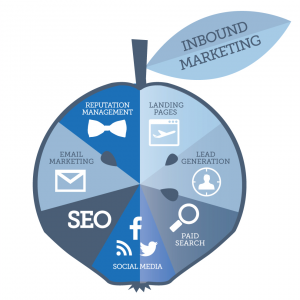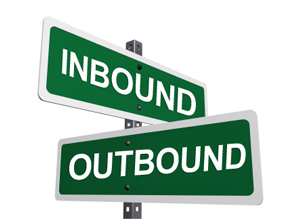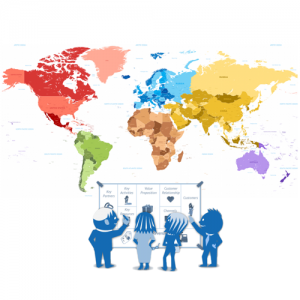When you Love Business and Hate Managing People
“We have never believed in the value of the traditional office, spending time on commuting and conducting annual performance reviews. We deal with issues here and now and leave it to the individual how to perform his or her tasks. We start with a high level of trust and then see where that takes us.”
Jesper Frier, COO with XINK
The managing director of a major British company noticed that her staff all had a variety of signature styles in their emails. No two styles were the same. On internal emails that was not a big deal, but on external emails, she found it left an impression of unprofessionalism. She talked to the marketing director about the issue and was told that standards had been designed and distributed for all employees to implement. That was a couple of years ago. Not knowing how to apply an email signature herself, the CEO asked the marketing director to come up with a solution that didn’t require intervention by every employee.

The marketing director took the issue to the company’s CIO who was responsible for the IT-systems, including the Microsoft Office platform from where all emails were written and submitted. The CIO chartered one of his staff members to search the web for possible solutions.
Among the options was XINK.
The XINK value proposition
Today XINK is a cloud-based email signature solution for companies using Microsoft Office 365 and the Google G-Suite. It moves the task of setting up email signatures away from the individual user and places it at a central point. This is usually in the marketing department. While many companies and government institutions saw the need for maintaining certain corporate identity standards in their emails, using corporate emails for marketing purposes took longer to spread.

“When we started in the autumn of 2003, we already had the idea that corporate email is a marketing channel,” says Jesper Frier, COO and co-founder of XINK. “We added campaign management as one of the first features to the platform. However, we were way ahead of the market, and it took some years before marketing managers began to understand the advantage and include it in the requirement specification for an email signature solution.”
XINK, that was initially launched under the name eMailSignature and was an on-premise prepaid application, is today exclusively delivered as a cloud-based service. The on-premise version was discontinued in 2018, and support ended as of December 31st, 2018. The price now starts at $1 per user per month and gets discounted with increasing volume. The average sales cycle is one month, but varies primarily with the size of the customer. Most deals are closed within the 14-day free trial period. The customer base includes all types of companies ranging from 50 and up to 80.000 users. Four thousand customers with a total of two million users are using XINK.
“The acceptance of services like XINK originally had two drivers,” Jesper Frier explains. “The need for a consistent corporate identity and the productivity gained from not having thousands of staff members trying to figure out how to implement and maintain manual signature templates. The third driver, the benefits of using emails for marketing purposes, took much longer to mature.”
Revenue generation – a complex purchase process
Although the style of corporate emails is a marketing issue, the process for finding a tool for central template management has mostly been left to the IT-department.
“Most purchase processes involve two or three buying centres,” Jesper Frier stresses. “Marketing and IT are always involved. Sometimes the CFO also has a say if not only to decide from which budget to pay.”
Even though the first contact is from a marketing person, XINK always recommends that the IT-department get involved right from the start. Involving them at the end of the selection process often makes the process come to a halt and delays the decision.
The revenue generation approach was initially outbound and directed at potential customers that the founders already knew or knew of. Later, a call centre was engaged to book meetings with potential customers. The initial sales meeting, which was always face-to-face, was also a learning session as only a few potential customers were aware of the issues and potential around corporate email signatures.
“Our initial approach was expensive and difficult to scale,” explains Jesper Frier. “We needed salespeople that could cover the marketing side of the solution and also answer the questions associated with the technical implementation. The price of the solution didn’t justify having two people involved. Finding salespeople that could bridge the two domains was difficult, if not impossible, to find.”

It was a pilot project selling into the German market in 2007 that demonstrated the potential of outbound telesales. Following an EU directive requiring that all business emails must include an authorised EU email disclaimer with the company’s registration number, the place of registration and the registered office address, XINK engaged a telesales centre in Wilhelmshaven to call potential customers. Interested prospects were directed to a German version of the website from where they could download a trial. Face-to-face meetings were not offered, but a German-speaking person would answer questions. The pilot project paid for itself but was not scaled (see below). After stopping the outbound call activity in Germany, leads continued to appear. The EU directive stimulated the search for email signature solutions, and XINK’s German website attracted the traffic.
“It was around 2005, and especially following the activity in Germany, that we started investing in online marketing activities,” remembers Jesper Frier. “The market had matured, and through organic and paid search we could generate a substantial flow of visits and trial-downloads. Now we just needed to find ways to improve the conversion rates.”

From 2005 to 2014, XINK refined its online marketing activities and primarily followed an inbound revenue generation process. The primary challenge remained the need for dealing with the two purchase centres, marketing and IT, of which IT was the most difficult to handle. IT-departments are typically overloaded with work and can be very restrictive when introducing new software applications. To reduce the IT-component of the solution, XINK launched a cloud-based version at the end of 2013. The IT effort was now reduced to a 45-minute activity.
“With the cloud version we were convinced that we could sell to the marketing team without the need to involve the IT-department,” says Jesper Frier. “We, therefore, invested heavily in outbound lead generation activities, only to find out that we were wrong.”

Running outbound lead generation and sales activities in 2014 and 2015, XINK learned that too many cases were lost because the IT-department didn’t get involved upfront. Although the market had matured considerably since the start in 2003, it was also still difficult to predict which types of customers would be most receptive to introducing central email signature template management and which kind of customers would consider corporate emails a marketing channel. Summing up, the conversion rates were too low for the outbound approach to yield a positive ROI.
“We were not able to make the outbound revenue generation approach profitable,” admits Jesper Frier. “We tried all types of variations but couldn’t find the right mix of market segmentation and sales approach. One reason may also be that none of us enjoyed performing the tight sales management that an outbound approach requires.”
In 2016, XINK returned to the inbound approach and have since managed to maintain a thirty per cent annual growth rate. Significant investments were made in the web site, and live chat is now available 24/7 in all time zones where XINK can respond instantly to questions from potential customers worldwide.
“The inbound revenue generation approach, with virtual meetings only, works very well for us,” Jesper Frier says. “It is much easier to manage and doesn’t require that our people gather at the same locations.”
To complete the picture, XINK also tried to build an indirect channel of resellers, which wasn’t successful either.
“Today we have 50 resellers, and the secret behind their success is that they approached us,” says Jesper Frier. “Outbound reseller recruitment never worked for us. Finding the level of engagement required was like finding the famous needle in a haystack. Potential resellers continually approach us, and we can now pick those with whom we have a shared mindset.”
Internationalisation

XINK has customers in more than 100 countries, and the internationalisation started when XINK launched its first English website in 2005. Over the years XINK has had operations in Denmark, Germany, Australia, the UK and the USA with various types of setups and engagement formats.
“Neither Bjarne Mess (founder and CTO) nor I have an appetite or a talent for people management,” Jesper Frier admits. “In our current setup, all our people are freelancers and invoice us. We pay a fair, fixed monthly fee and then a result-based commission or bonus on top.”
All XINK people work from home and enjoy this type of arrangement. Meetings are virtual, and most of the “staff” have never met each other in person.
“There are plenty of highly qualified people looking for a flexible workspace,” says Jesper Frier. “We have never believed in the value of the traditional office, spending time on commuting and conducting annual performance reviews. We deal with issues here and now and leave it to the individual how to perform his or her tasks. We start with a high level of trust and then see where that takes us.”
Today XINK is operating from multiple locations covering all time zones (sales/support).
“With our current approach we don’t care where people are located,” says Jesper Frier. “We also don’t need to meet in person before we hire someone. It is done online. We offer competitive remuneration packages and freedom that you don’t find in most other jobs. That freedom is something people all over the world enjoy and appreciate.”
Going forward, Jesper and Bjarne realise that penetrating the non-English speaking markets (such as Germany, France, Italy, China etc.) require localisation and different operational setups. However, as long as the demand from the English-speaking markets supports annual growth rates of 30-50 per cent, they see little reason for diverting from their current business model.
“We are becoming masters of inbound revenue generation and the virtual global operational setup,” Jesper Frier concludes. “Global demand is picking up, and we have a profitable model for getting our fair share. Compared to our competitors, our setup is by far the most profitable. For the foreseeable future, we will continue down that path.”
This post is an excerpt from my book Going Global on a Shoestring.








